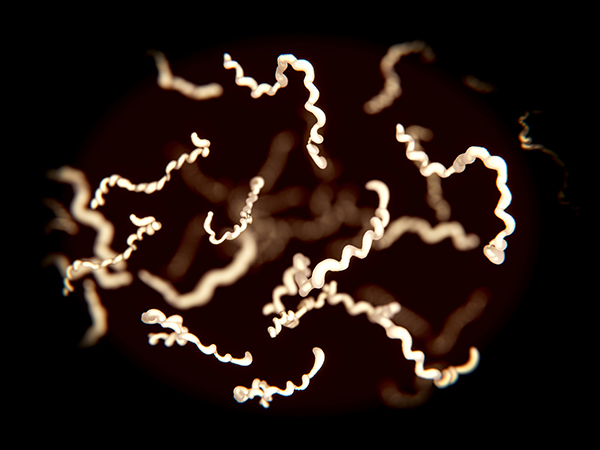New bird flu passes to mammals and causes “zombie-like” behavior — infected animals have no fear of humans
03/28/2023 / By Lance D Johnson

According to the United States Geological Study (USGS), a new bird flu strain is spreading from wild birds to wild mammals, causing “zombie-like” animal behaviors. The infected mammals possess various neurological issues and have no fear of humans, the government study warns.
The first outbreaks were observed across Europe as early as October 2021. The outbreaks are coming from a highly pathogenic avian influenza (HPAI) H5N1, which allegedly belongs to the Eurasian lineage, clade 2.3.4.4b. The strains were detected during wild bird surveillance in November 2021 and have spread rapidly across Newfoundland and Labrador Canada and the United States through wild bird reservoirs and through the domestic poultry supply, including both backyard flocks and birds in commercial poultry facilities.
New bird flu strain passes from wild birds to mammals
The new strains have even passed over to various mammalian species — most predominantly the red fox. The sickness has also been detected in the Eurasian River otter, the Eurasian lynx, ferrets, European polecats, and stone martens captured throughout Europe. In May 2022, US and Canadian epidemiologists isolated the highly pathogenic avian influenza HfN1 in wild mammals. Were gain-of-function virology experiments involved in the sudden mammalian transmissibility of the bird flu?
In the latest USGS study, epidemiologists detected HPAIv in 67 wild mammals across ten states. From April 1 to July 21, 2022, the researchers isolated infected animals from New York to Alaska, and many places in between, including North Dakota, Iowa, Utah, Washington, Wisconsin, Idaho, Michigan, and Minnesota. According to the study, the infected animals included 50 red foxes, six striped skunks, four raccoons, two bobcats, two Virginia opossums, one coyote, one fisher, and one grey fox. The mammalian species most likely to be infected is the red fox.
According to study co-author, Dr. Hon Ip, Diagnostic Virologist at the USGS National Wildlife Health Center: “The most likely cause of infection was from predation or scavenging of wild birds infected with HPAIv as wild birds are a component of the natural diet for many of these mammalian species.” According to genetic sequencing conducted on 48 of the wild mammals, the infections are confirmed to be crossing over from wild birds. The epidemiologists found no evidence of lateral transmission of HPAIv within wild populations of terrestrial mammalian species; however, there is experimental evidence that horizontal transmission of H5N1 HPAIv occurs in domestic cats and ferrets. Moreover, the authors of the study could not rule out the possibility of parent to offspring transmission of the virus.
Is an upcoming plandemic of highly transmissible bird flu on the horizon? Is man-made engineering involved in the spillover effect of this zombie-like bird flu? Is this the source of a future bird flu pandemic that former CDC Director Robert Redfield was warning about? Dr. Robert Redfield, recently appeared on an episode of Hill.TV’s Rising to warn that a “great pandemic is coming.” He said a new pandemic will be the consequence of international bioterrorism and gain-of-function research that hasn’t been stopped yet, despite it being implicated in the development of covid-19.
“I think it’s going to come [a new pandemic], not from spillover, it’s going to come from gain-of-function research or intentional bioterrorism. It’s going to be a bird flu virus that is manipulated to be able to transmit human-to-human, very similar to what we saw with COVID,” Redfield said.
The new spillover infections attack the mammals’ brains
Once these animals are exposed to infected wild birds, they exhibit “zombie-like” behaviors and neurological disorders. According to immunohistochemical analysis, the HPAIv virus invades the neuron cell bodies and replicates in the brains of infected animals. Additionally, the animals suffer from seizures, ataxia, blindness, vocalization, nystagmus, grimace, and tremors. Some had severe lethargy, fever, diarrhea, recumbence, vomiting, paralysis, and unconsciousness. According to the study, the sick animals possessed “inappropriate and lack of fear of humans.”
Thirteen of the red foxes possessed immunoreactivity in the brain, accompanied by positively strained neuronal cell bodies and inflammatory processes in the cerebral cortex, thalamus, hippocampus and brain stem. Similar immunoreactivity was found in the cortex of the infected opossums and in the cortex, thalamus, and hippocampus of the bobcat. Other neurological symptoms included necrotizing meningoencephalitis and myocardial necrosis. A total of 47 infected animals also suffered from necrotizing interstitial pneumonia.
Here is the current distribution of highly pathogenic avian influenza in North America: The study authors wrote, “Given the broad scope and ongoing nature of the outbreak, these cases likely represent only a small percentage of the total number and species of mammals infected with the currently circulating strain of HPAIv in the United States.”
Sources include:
BioRXIV.org [PDF]
Submit a correction >>
Tagged Under:
biological weapon, bioterrorism, biowar, bird flu, bird surveillance, brain damage, dangerous, Dr. Redfield, encephalitis, gain-of-function, infections, neurological dysfunction, outbreak, pandemic, plague, pneumonia, real investigations, research, seizures, sick animals, spillover, wildlife, zombie infection
This article may contain statements that reflect the opinion of the author
RECENT NEWS & ARTICLES
COPYRIGHT © 2017 Biowar.com
All content posted on this site is protected under Free Speech. Biowar.com is not responsible for content written by contributing authors. The information on this site is provided for educational and entertainment purposes only. It is not intended as a substitute for professional advice of any kind. Biowar.com assumes no responsibility for the use or misuse of this material. All trademarks, registered trademarks and service marks mentioned on this site are the property of their respective owners.


















